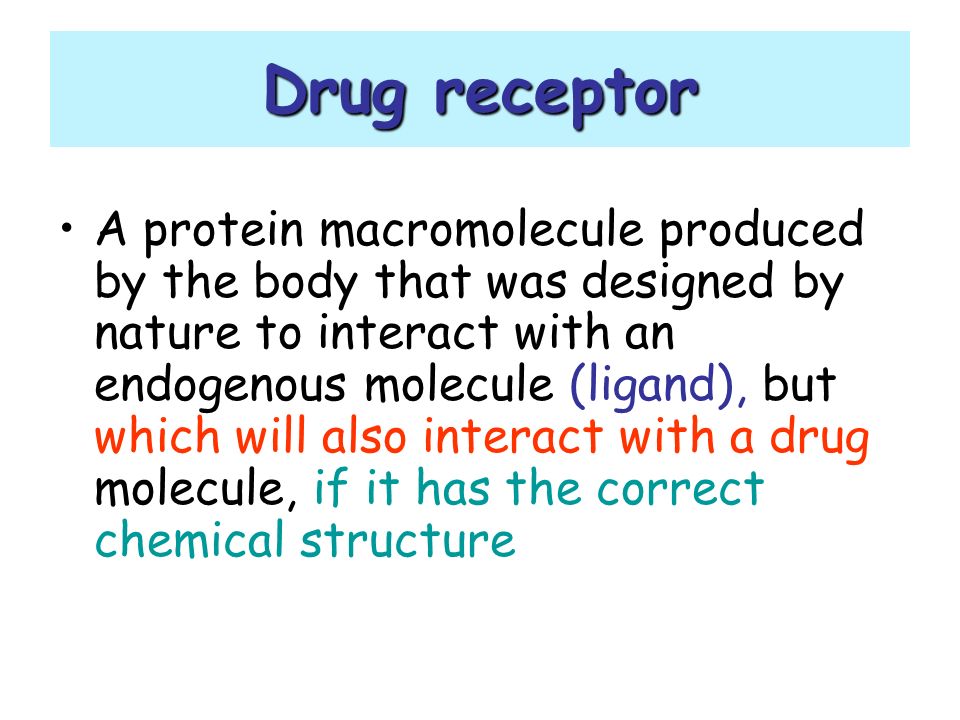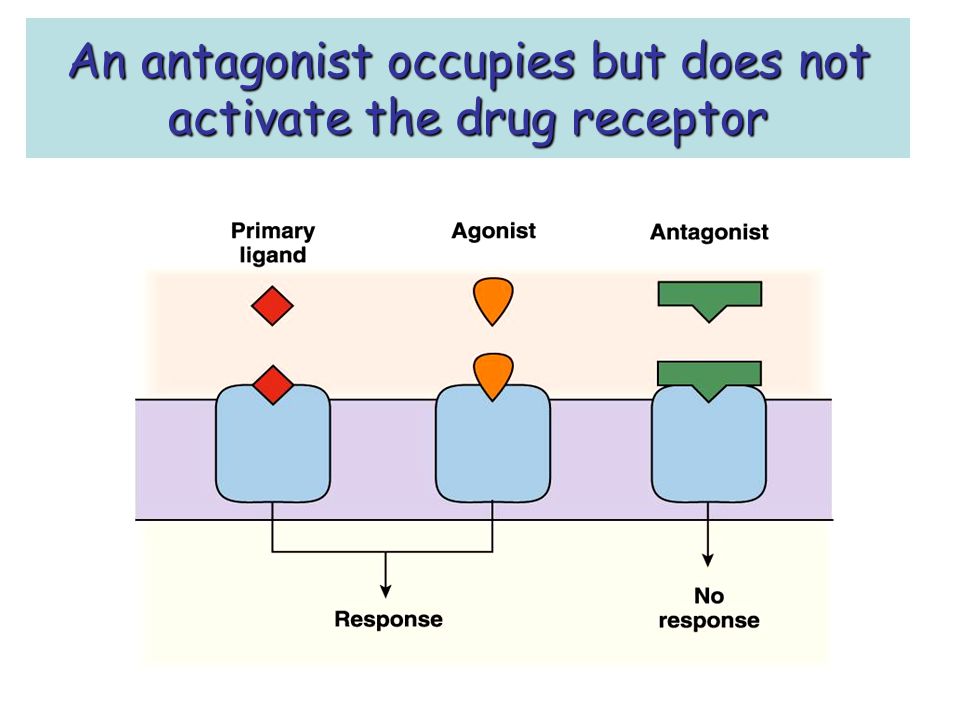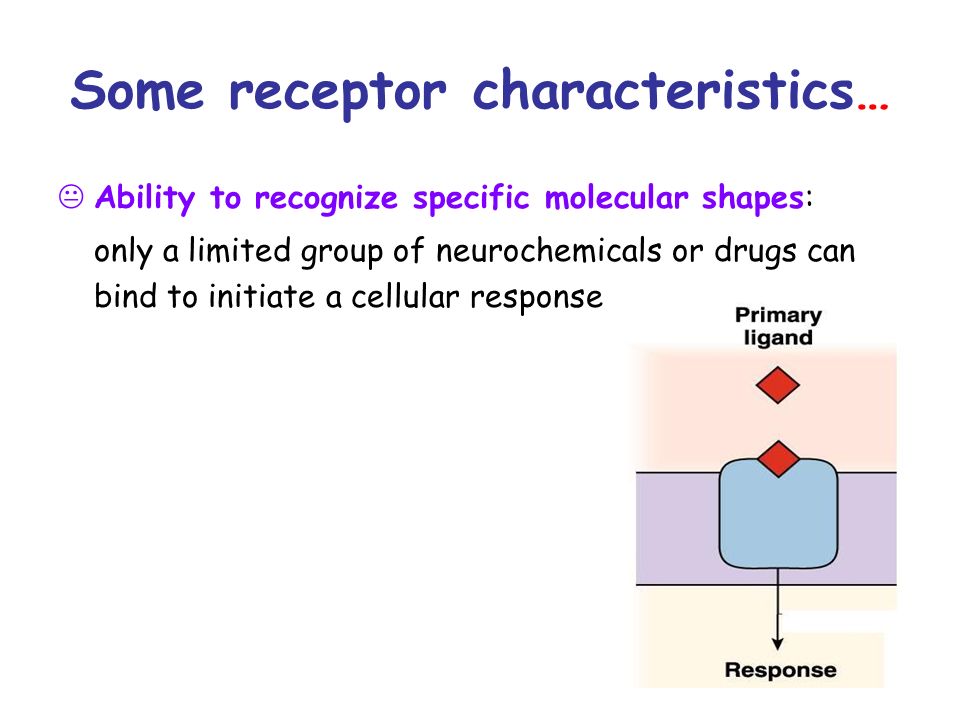10 Drug A and Drug B tested in an in vitro system turn out to have equal affinity for the same receptor and intrinsic activities greater than zero. Activated receptors directly or indirectly regulate cellular biochemical processes eg ion conductance protein.

Drug Receptors And Pharmacodynamics Ppt Video Online Download
Drug Receptor Interactions I II.

. We will start with a basic review of GPCR signaling as these concepts are critical to understanding the function of cannabinoid receptors. The term which describes a drugs strength of binding to a receptor is ____. Variability in the receptor protein or the ion channel may determine the magnitude of the pharmacologic response.
As the best-described cannabinoid receptors are G-protein-coupled receptors GPCRs those will be the focus of this chapter. When Drug B is co-administered with a fixed dose of Drug A the log dose - effect curve of Drug B is shifted to the right. The potency of a drug is best described as.
In this definition any molecule to which a drug binds thus initiating an effector mechanism leading to a specific pharmacologic response is a drug receptor. How can the diagram of drug receptors best be described. When Drug B is co-administered with a fixed dose of Drug A the log dose-effect curve of Drug B is shifted to the right.
Drugs and transmitters bind to the receptor to produce a pharmacologic effect. Receptors are located mostly on the cell membrane but certain intracellular receptors are found as well. School University of Houston.
The maximal efficacy of drug B is 100. Drugs to bind to and activate a given receptor. Drug A and Drug B tested in an in vitro system turn out to have equal affinity for the same receptor and intrinsic activities greater than zero.
Drug receptors are macromolecules that upon binding to a drug mediate those biochemical and physiologic changes. This chapter will review the basic pharmacology of endocannabinoid receptors. Receptors are macromolecules involved in chemical signaling between and within cells.
Most drug receptors are a Small molecules with a molecular weight between 100 and 1000 b Lipids arranged in a bilayer configuration c Proteins located on cell membranes or in the cytosol d DNA molecules e RNA molecules 25. Receptors are the targets for drugs and endogenous transmitters because of their inherent molecular recognition sites. The binding can be specific and reversible.
Course Title CHEM 2. The broadest definition of a drug receptor is given in Table 14. Receptors are macromolecules involved in chemical signaling between and within cells.
The receptors are usually protein molecules which undergo a change in conformational status whenever acted upon by a drug thereby inducing changes in systems within the cell. The best-characterized drug receptors are regulatory proteins which mediate the actions of endogenous chemical signals such as neurotransmitters autacoids and hormones. The amount of drug required to produce the response desired The strength of binding between drug and receptor is best defined by which of the following terms.
They may be located on the cell surface membrane or within the cytoplasm see table Some Types of Physiologic and Drug-Receptor Proteins Effect of Aging on Drug Response. Molecules eg drugs hormones neurotransmitters that bind to a receptor are called ligands. Which of the following best describes a drug that.
Which of the following terms best. The term which describes a drugs strength of binding to a receptor is ____. Alock and key BFlow chart CChain of digestion.
Activate receptors to produce the desired response. The maximal efficacy of drug B is 100. Which of the following best describes a drug which a.
Chemical recognition is the function of receptors which in addition to recognising endogenous chemical signals are also the target of many important experimental and therapeutic drugs. Macromolecules protein in nature which are target sites for drugs. A 55-year-old woman with hypertension is to be treated with a vasodilator drug.
In comparison to endogenous ligands of seven-transmembrane receptors which typically act as full agonists many drugs act as partial agonists. This compound has high affinity for the receptor and therefore it is best described as some sort of supercaffeine a type of molecule that we had worked on in Leiden before. This class of receptors mediates the effects of many of the most useful therapeutic agents.
Drug X in a dose of 5 mg produces the same decrease in blood pressure as 500 mg of drug Y. Activated receptors directly or indirectly regulate cellular biochemical processes eg ion conductance protein phosphorylation DNA transcription enzymatic activity. The maximal efficacy of drug B is 100.
Drugs X and Y have the same mechanism of action. Partial agonism is best described as a macroscopic property that is manifest at the level of physiological systems or cell populations. Receptors therefore lie at the.
Most drugs have to bind receptors to produce effects. Which of the following best describes a drug that binds to a receptor and mimics. There are three forms of binding to receptors.
Chemical signalling is the main mechanism by which biological function is controlled at all levels from the single cell to the whole organism. Pages 11 Ratings 100 11. However whether partial agonists also encode discrete regulatory information at.
Drug binds reversibly to the active site of a receptor and competes with agonist binding to this site. Drug binds irreversibly to the active site of a receptor and prevents agonsit from binding. They may be located on the cell surface membrane or within the cytoplasm see table Some Types of Physiologic and Drug-Receptor Proteins Effect of Aging on Drug Response In contrast to pharmacokinetic effects pharmacodynamics is defined as what the drug does to the body or.
Which of the following best describes a drug which is a noncompetitive antagonist. A receptor is defined as that component of a cell or organism that interacts with a drug and initiates the chain of biochemical events leading to the drugs observed effects. When Drug B is co-administered with a fixed dose of Drug A the log dose-effect curve of Drug B is shifted to the right.
Drug A and Drug B tested in an in vitro system turn out to have equal affinity for the same receptor and intrinsic activities greater than zero.

Drug Receptors And Pharmacodynamics Ppt Video Online Download

Drug Receptors And Pharmacodynamics Ppt Video Online Download
0 Comments